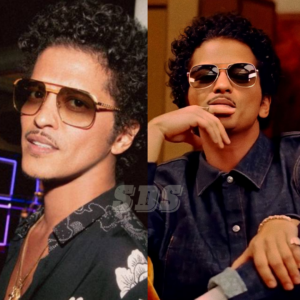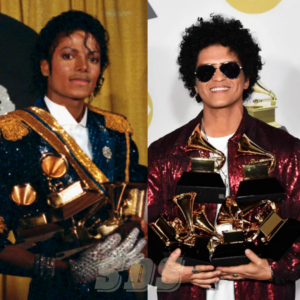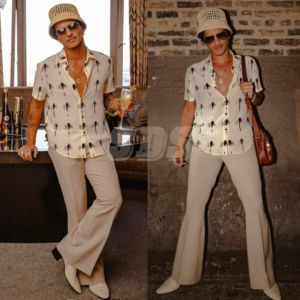Even four decades after its release, Michael Jackson’s “Billie Jean” remains a cultural touchstone.

The song was released in January 1983 as the second single from Jackson’s sixth studio album Thriller. “Billie Jean” was a major commercial success, topping charts around the world and becoming one of Jackson’s signature songs. Beyond its initial popularity, “Billie Jean” has endured, maintaining relevance through its innovative musical style, enigmatic lyrics, iconic music video, and profound cultural influence.
Musical Innovation
At its core, “Billie Jean” is a masterclass in musical fusion. Jackson blended elements of rhythm and blues (R&B), funk, post-disco, and nascent dance-pop to create a sound that was fresh yet timeless. The song’s foundation lies in its instantly recognizable drum beat, played by session drummer Jonathan Moffett. Moffett’s sparse yet propulsive beat drives the song’s energy through a combination of syncopated hi-hat work and forceful bass drum accents on the 2 and 4 counts.
Above Moffett’s percussion, Jackson and producer Quincy Jones crafted layered melodic elements. Jackson’s vocals float above a supple bassline and shimmering synthesizers. Guitarist David Williams adds blues-influenced fills that accentuate the beat. Horns and strings swell at key moments for dramatic effect. Through its fusion of genres, “Billie Jean” pushed the boundaries of popular music. The song demonstrated how disparate styles could blend together cohesively to create something innovative, appealing to fans both familiar and new to these genres.
Musicologists have praised “Billie Jean” for its sophisticated harmonic structure and melodic development. While outwardly danceable and accessible, the song contains complex musical ideas. Its verse progression moves from A minor to D minor to G minor, an unconventional sequence. The melodic hook utilizes a descending chromatic line that builds tension. These compositional details, combined with the tight rhythmic interplay of instruments, gave “Billie Jean” its timeless quality and ensured the song would continue to captivate new generations of listeners. Its musical style remains fresh and influential today.
Enduring Mystery
Beyond its musical innovation, “Billie Jean” intrigues through the ambiguity of its lyrics. The song tells the story of a woman named Billie Jean who claims Jackson is the father of her child. However, Jackson maintains her accusations are false. The narrative leaves many details open to interpretation, fueling ongoing listener engagement and debate.
Is Billie Jean telling the truth? Is Jackson in denial? Did a romantic encounter occur between the two, or is she fabricating the whole story? The lyrics never provide a conclusive answer. By crafting an enigmatic he said/she said scenario, Jackson ensured the song would spark the imagination of audiences for years to come. Listeners are left to analyze subtle clues in the lyrics and vocals for hints about Jackson’s culpability or innocence. This mystery has driven cover versions, literary analyses, and online discussions dissecting every word.
The ambiguity also allows the song to take on new meanings when viewed through different cultural lenses over time. In the 1980s, “Billie Jean” resonated as a story of male anxiety over false accusations from women. But today, some interpret the lyrics as depicting the experience of women facing disbelief and doubt when making claims of sexual misconduct. The open-ended storytelling continues to connect with audiences on deeper levels thanks to its lack of explicit resolution. After forty years, the mystery of “Billie Jean” still intrigues listeners and keeps the discussion alive.
Groundbreaking Music Video
To bring the “Billie Jean” story to life visually, Jackson and director Steve Barron crafted one of the most influential music videos ever made. Premiering in 1983, the video for “Billie Jean” was essentially a mini-movie, running nearly nine minutes in length. With a narrative structure and cinematic production values well beyond the norm for music videos at the time, it helped establish the modern format.
The video introduced viewers to Jackson’s iconic dance moves through dynamic choreography. However, its most famous sequence came two-thirds of the way through, as Jackson performed the moonwalk for the first time on camera. The illusion of appearing to glide backward while moving forward stunned audiences and cemented the moonwalk in pop culture history. This moment is often cited as a watershed achievement that helped music videos gain greater mainstream acceptance.
Visually, the “Billie Jean” video was also groundbreaking for its use of lighting, angles, and camerawork to enhance Jackson’s performance. Scenes were shot on location in gritty urban environments rather than sterile soundstages. Quick cuts and dynamic camera moves kept the action lively. Stylistically, the video had a neo-noir influence, with Jackson portrayed as a mysterious outsider. These production qualities set a new standard that future music videos sought to emulate.
Beyond its technical achievements, the “Billie Jean” video had a profound cultural impact. It was one of the first videos by a Black artist played in heavy rotation on the newly launched MTV channel. This helped break down racial barriers, opening the door for more diversity on the network. The video also played a key role in introducing Jackson’s talents to mainstream white audiences, further propelling his crossover popularity. Its influence is still visible in modern music video styles and conventions. Overall, the “Billie Jean” video was a true artistic and technological landmark.
Cultural Transcendence
Through its ubiquitous presence across media, “Billie Jean” fully transcended the world of music to become a global pop culture phenomenon. Beyond its success on radio and charts, the song permeated film, television, and other artistic realms. It has been featured or referenced in countless movies, shows, commercials, and video games over the decades.
The cultural footprint of “Billie Jean” extends far beyond simple reuse of the song itself. Elements like the moonwalk and Jackson’s fedora-clad persona became visual shorthands recognizable worldwide. Imitations and homages to Jackson’s iconic dance moves from the video proliferated in entertainment and viral videos. Celebrities from Usher to Jimmy Fallon have paid tribute through memorable televised performances.
Perhaps most significantly, “Billie Jean” served as a gateway for millions of new fans to discover Jackson’s artistry. Its popularity helped propel sales of the Thriller album to over 110 million copies globally, making it the best-selling album of all time. For many, the song was their initial exposure to Jackson before delving deeper into his extensive catalog. Its inescapable presence in the 1980s pop culture firmament helped cement Jackson’s status as the “King of Pop.”
Four decades later, “Billie Jean” continues to permeate global culture in fresh ways. Its influence is visible in modern pop, hip hop, dance styles like voguing, and viral internet memes. The song maintains relevance through sampling and interpolation by artists like Beyoncé, Lil Wayne, and Kendrick Lamar, keeping the music alive for new eras. Through its boundless cultural impact, “Billie Jean” transcended the single format to become a defining artistic work that will resonate for generations to come.
Conclusion
In the forty years since its release, Michael Jackson’s “Billie Jean” has lost none of its brilliance or resonance. Through musical innovation, enigmatic storytelling, and groundbreaking visuals, it broke new artistic ground that changed the landscape of popular culture. Its influence continues to inspire fresh generations of artists and amuse audiences worldwide.
As one of the best-selling singles of all time, “Billie Jean” was instrumental in propelling Thriller to become the best-selling album ever. Its ubiquity in films, TV, and other media helped cement Jackson’s status as an unparalleled pop icon. Even today, elements of the song like its drum beat, bassline, and the moonwalk remain universally familiar touchpoints of 1980s pop.
Most significantly, “Billie Jean” endures because it transcends its original context to take on new meanings with each era. Its ambiguity allows fresh interpretations, while its musical style continues to excite dancers and producers. Through sampling and homage, new artists ensure Jackson’s genius influences popular music for years to come. After forty years, “Billie Jean” shines as a true work of art – one that pushes creative boundaries, sparks ongoing cultural discussion, and brings joy to countless new listeners with each spin. Its resonance is a testament to both Jackson’s singular talent and the timeless power of a truly great song.
News
Bruno Mars first appeared after suspicion of losing $50 million in gambling debt: Extremely depressed, in tears during the show in Thailand
On the evening of March 30, Bruno Mars held a large-scale live concert in Bangkok (Thailand). Bruno Mars visited Thailand over two weekends (March 30 and 31) as part of a series of live concerts held by male artists in…
The Mars Effect: Speculating on Bruno Mars’ Potential Genre Choices for a Jump to the Big Screen
Bruno Mars has become one of the most successful pop stars of the 21st century, with his soulful voice, retro style, and dynamic stage presence charming audiences around the world. Though he has primarily focused on his music career, Mars’…
From Struggling Artist to Superstar: How Bruno Mars’s Journey Teaches Us the Power of Perseverance and Self-Belief
Bruno Mars has become one of the biggest pop stars on the planet, churning out hit after hit and selling out arenas around the world. However, his path to stardom was filled with struggles and setbacks that would have derailed…
From Thriller to Treasure: Bruno Mars’ Surprising Takeaways from Michael Jackson
In the realm of music, certain artists etch their names into the annals of history not just for their talent but also for the profound impact they have on subsequent generations. Michael Jackson, the King of Pop, undoubtedly stands as…
Exploring the Explosive Bromance: Bruno Mars’s Best Friendship Lyrics Unveiled!
In the realm of music, where emotions flow freely and sentiments are expressed in melodies, Bruno Mars stands out as a maestro of capturing the essence of human connections. While he’s renowned for his romantic ballads and infectious beats, Mars…
The Surprising Rise of Bruno Mars: Unpacking His Evolution with Award-Winning Milestones
Bruno Mars has become one of the most successful pop stars of the 21st century, blending elements of pop, R&B, funk, and soul into his infectiously catchy songs. Mars’ trophy cabinet traces an impressive evolution from behind-the-scenes songwriter to global…
End of content
No more pages to load











